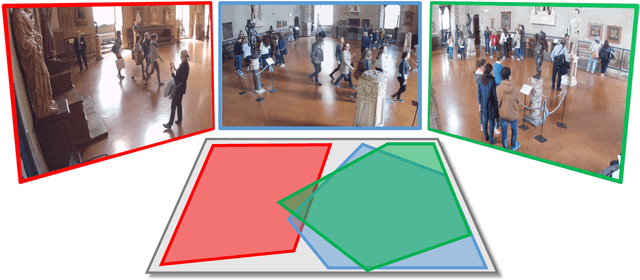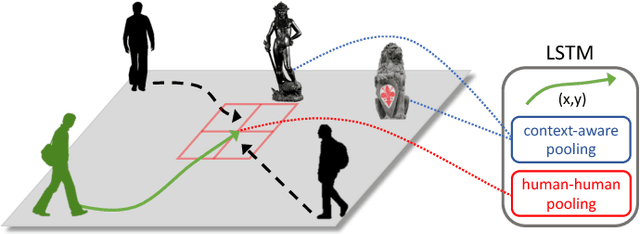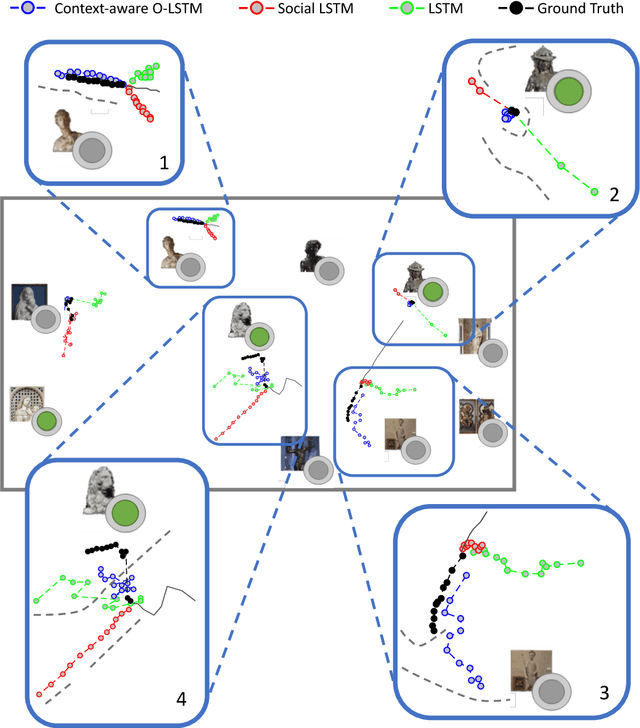Context-Aware Trajectory Prediction
Paper and Code
May 06, 2017



Human motion and behaviour in crowded spaces is influenced by several factors, such as the dynamics of other moving agents in the scene, as well as the static elements that might be perceived as points of attraction or obstacles. In this work, we present a new model for human trajectory prediction which is able to take advantage of both human-human and human-space interactions. The future trajectory of humans, are generated by observing their past positions and interactions with the surroundings. To this end, we propose a "context-aware" recurrent neural network LSTM model, which can learn and predict human motion in crowded spaces such as a sidewalk, a museum or a shopping mall. We evaluate our model on a public pedestrian datasets, and we contribute a new challenging dataset that collects videos of humans that navigate in a (real) crowded space such as a big museum. Results show that our approach can predict human trajectories better when compared to previous state-of-the-art forecasting models.
 Add to Chrome
Add to Chrome Add to Firefox
Add to Firefox Add to Edge
Add to Edge